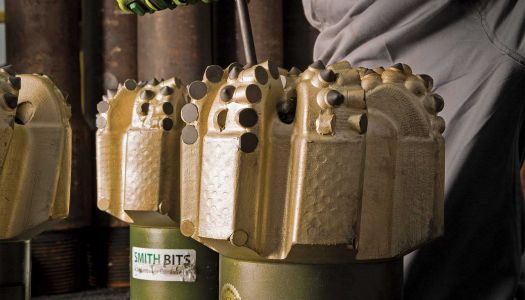Ball Valve:
Ball valves are flow valves that are quarter-turn and straight through apparatuses. These valves allow for shut-off and/or purposes of control. They have a round closure element that contains a matching pair of rounded seats. These seats allow necessary sealing to take place. The ball valve pressure rating and materials used determines what kind of seat is required. Not all valve seats are the same. Some are of the single molded variety while others have higher- pressure ratings, which often include a design known as a "trunnion." This design means that each ball valve face is sealed separately, not together.
Ball valves have many good points and are often considered superior to many other kinds of valves. Ball valves are very easy to use and can both maintain and regulate three things-high pressure, high volume and high flow of temperature. Other advantages of ball valves are that they are sturdy devices that can be purchased for a low price and they have a long service life. An added plus is that the regulating element's design makes it easy for the ball valve to work without concern about side loads, which often plague globe or butterfly valves. The ball valve design allows for the easy ability to fix the seats if a problem arises and also seals without having to take away the body of the valves from the line.
Gate Valve:
Gate valves are also known as slide valves or knife valves. A gate valve consists of a flat closure piece that slides into place. The inside diameter of the valve body is often very close or identical to attached pipes, so a fully open slide gate valve causes only a negligible pressure drop. Gate valves are very effective shut-off valves.
Since the gate inside an industrial gate valve takes a linear path through the center of the valve it can cut through thick fluids. This makes industrial gate valves ideal for situations that involve slurry or viscous fluids, like oils or grease.
API Flanges:
A flange is an external or internal rib, or rim (lip), for strength, as the flange of an iron beam or Ibeam (or a T-beam); or for a guide, as the flange of a train wheel; or for attachment to another object, as the flange on the end of a pipe, steam cylinder, etc, or on the lens mount of a camera. Thus a flanged rail is a rail with a flange on one side to keep wheels, etc., from running off. The term "flange" is also used for a kind of tool used to form flanges
Weld Neck Flanges are drilled (machined) with the wall thickness of the flange having the same dimensions of the matching pipe, the lighter the pipe is, the larger the bore, conversely, the heavier the pipe, the small the bore, they are normally used for high-pressure, cold or hot temperature.
We produces a complete line of API flanges to API-6A, including Weld necks, Blinds, and Companion Flanges. They are produced from Product Specification Level 1 through Product Specification Level 3 in the appropriate materials required by the specification. Any other special material requirements are available upon request!
A large raw material forging inventory is maintained and available for your requirements. Specialty forgings are available from our approved forging vendors.
Full Material Test Reports and any Additional Testing Certificates are available on all products. Additional test certificates to include, UT, MPI/WFMPI, individual hardness tests, and hydro tests when required..
Casing Head:
Casing head is a kind of part of connecting casings and wellheads. It is used as supporting the weight of technical casing and oil string casing ,sealing the annular space between the casings, It provides a transition joint for the tubing head, Christmas tree and other wellheads, It can also supply cement, monitor and control well’s sinking, inject balance liquids etc through the two side outlet on the casing head housing.
Providing attachment to the surface casing string through the type of bottom connection (Slip-on-weld, threaded, Sliploc), the casing head is typically qualified to withstand up to 10,000 psi working pressure. It suspends the casing and packs off the next casing string while providing annular outlets, as well as supporting the BOP while drilling the remaining stages.
The casing head produced by our company is a standard structure, in which the casing hanger produced by our company is fitted, The casing hanger can be elected on size according to the casing procedure and the change of well head condition. On the upper of the casing heads sets all API 6B or API 6BX flange.
The bottom connection of the casing head shall be either API perfect circle thread casing box or API standard trapeziform casing threaded box, socket welded connection and slip type connection as well.It can be provided with weld-group supporting baseplate.
Side outlets are provided with pipeline threaded connection and bolted connection, bolted side outlet is machined with female thread of VR valve-changer.
Tubing Head:
A wellhead component that supports the tubing hanger and provides a means of attaching the Christmas tree to the wellhead. Tubing had is spool-type unit or housing attached to the top flange on the uppermost oil-well-casing head to support the tubing string and to seal the annulus between the tubing string and the production casing string.
Tubing Head Adapter:
The tubing head adapter provides a transition between the tubing head and the Christmas tree. The bottom adapter connection matches the tubing head, and the top adapter connection matches the tree. Tubing head adapters are available for all types of single and multi-string completions, including those using electric submersible pumps, packers, down hole control valves and gas lift valves. These adapters come with threaded, flanged or studded-flange top connections. Most tubing head adapters are available with hydraulic supply inlets for down hole control lines. If the customer requires, DELTA also supplies various types of adapters that will accommodate continuous control-line capabilities. Following you will find the most commonly used types.
Blind Flanges:
The blind flange is a flange without a bore. It is used to close off the ends of a piping system and/or a pressure vessel opening. It also permits easy access to the interior of a line or vessel once it has been sealed and must be reopened.
Specification:
- Size: 1/2 - 24"
- Pressure class: 150 - 2, 500lbs
- Facing: RF / FF / RTJ
- Material: Stainless steel, Carbon steel, Alloy steel
- We can supply flanges according to customers' needs
- ANSI B16. 5/DIN/JIS/UNI/BS/GB
- Big size flange: ASME B16.47
Hammer Union:
The Hammer Union can be used for cementing trucks, all kinds of manifolds and other high pressure equipment, and pipes. It is an important part for transporting oil. Water, fracturing fluid and mixed fluid . These products are all made of high quality steel by forging and finishing cut .They have good. mechanical performance and sealing property. Especially they can operate under the bad weather condition. They can be assembled fixed easily and conveniently. Main technical parameter model number collecting norm working pressure ,structural length drift diameter. the product adopts some end connections of pipeline thread, tubing thread, butt-weld.











